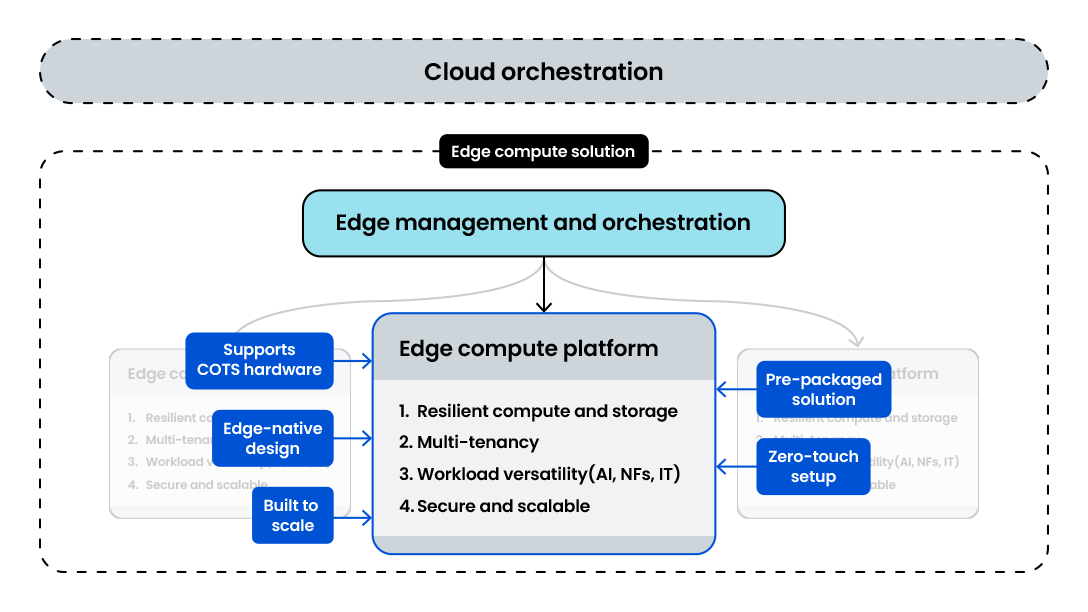Edge computing is all about processing data closer to where it’s generated, whether that’s a retail store, smart factory or remote office. For AI, IoT and latency-sensitive applications, sending everything to a centralized cloud can add cost, delay and risk. That’s why edge computing is gaining traction – and why choosing the right solution matters.
So, what should you look for in a good edge computing platform? In this post, we explore the solution-level features that help deliver performance, flexibility and lower total cost of ownership.
Deploy with zero-touch simplicity
Edge sites are often remote and numerous, so solutions must support true zero-touch provisioning. Bringing up a site should be as simple as plugging in cables and powering on. Day-1 setup, hardware swaps and scaling should require no manual config at the edge.
Run on flexible, off-the-shelf hardware
Unless your use case demands custom hardware, your edge solution should run on commercial off-the-shelf (COTS) servers. That ensures choice, lowers costs and avoids supply chain risks. Look for support for key features like SR-IOV, GPU acceleration and LTE connectivity out of the box.
Adapt to evolving workloads
Edge workloads – and the applications that power them – are evolving fast. Your platform needs to support a mix of VM and containerized workloads, running natively on hardware or orchestrated across a lightweight edge cloud.
Optimize total cost of ownership
Some solutions need upfront professional services just to get started. Others bake in key functionality and orchestration tools from the start. To understand total cost of ownership, factor in both Day-1 setup and Day-N operational costs, especially the cost of scaling and maintaining multiple sites.
Choose a platform built for the edge
To succeed at the edge, platforms must go beyond rebranded data center infrastructure. True edge-native platforms are built factoring in the specifics of edge needs. They need features like, resilient management support over patchy or low-bandwidth connections, centralized control of all aspects of edge to minimize truck rolls, streamlined backup and recovery, resilient hardware swaps and more – all without driving up resource use or complexity.
Pick a product, not a project
Edge environments are complex – hardware, virtualization, orchestration, networking and more. A packaged, pre-qualified product with options for common use cases is often a smarter choice than a flexible but barebones toolkit that requires costly customization to deploy.
Scale without re-architecting
A strong edge solution supports centralized management of hundreds or thousands of sites. The platform should scale horizontally and let you expand over time, without re-architecting, as your deployment grows.
These solution-level factors form the foundation of a successful edge strategy.

